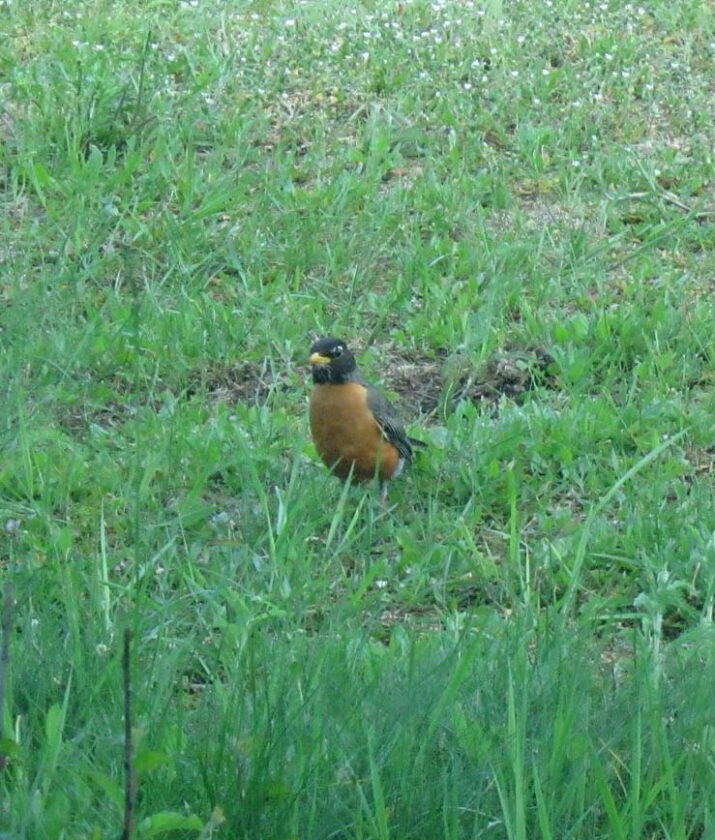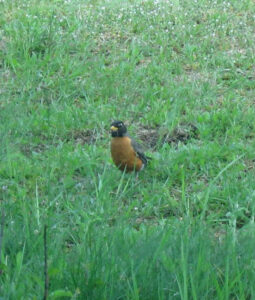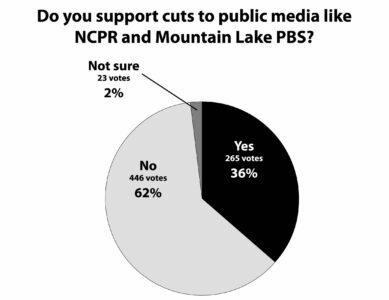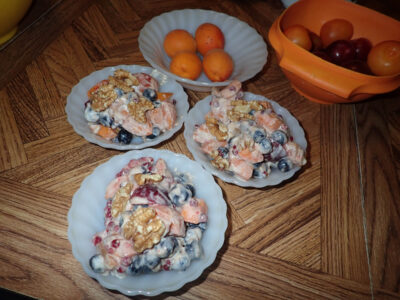Identity crisis: American robins aren’t even robins

An American Robin searching for worms. (Provided photo — Diane Chase)
I didn’t know that American Robins were holding a secret. They are named for the European Robin, which is half its size, solely based on its familiar red breast. Naming a bird a robin was first documented in England in the early 1500s. Then, when early English-speaking settlers and explorers saw any similar-looking bird on their travels, they named it a robin. Since those explorers weren’t too choosy about getting the species correct, the color didn’t matter as well.
We all know that the robins we see in our yard have an orange chest color rather than red. The egg colors of those two species are also entirely different. American Robins have a distinctive “robin egg” blue, while the European Robin’s eggs are a buff color. Those “robin redbreast” poems and songs are not about the American Robin, but its European counterpart. A naturalist friend casually tossed out this information, not realizing the trauma and internet deep dive that was about to occur.
American Robins are part of the thrush family. European Robins are flycatchers. Research shows that robins don’t always fly south; some stay in their breeding territories. Robins aren’t even the first sign of spring. Stop making me cry. If robins choose not to migrate, they will spend winters high in the trees and not be as noticeable as in the warmer months. Since their diet consists of bugs and fruit, we see them early in the spring when the yards warm up, allowing them a constant source of fresh food and water.
How many robin-named birds are there? Over 114 types of birds are named robin. Five robins: the American robin (turdus migratorius), European robin (erithacus rubecula), rufous-backed Robin (turdus rufopalliatus), rufous-tailed Robin (larvivora sibilans) and Siberian blue robin (larvivora cyane) are protected under the Migratory Bird Treaty Act. The MBTA is a shared agreement to protect migrating birds between the United States and four neighboring countries: Japan, Canada, Mexico and Russia.
According to Cornell Lab All About Birds, even though robins can produce three broods a year, only 40% of nests produce young. Of the remaining survivors, only 25% will be alive come winter. Robins are also a food source for hawks, snakes and domestic cats. Even with such grim survival statistics, robins are not considered endangered. I’m not sure how this study was conducted, but according to the Audubon Society, a young robin can eat over 14 feet of earthworms in a day.
We’ve been waiting for our personal house robin to leave her nest over our shed. She is still protective as she hops from branch to branch above my head, chirping at me as I walk through the garden. “You’re not even a robin,” I yell back to her. She doesn’t care.
Fun fact: In the 1964 Disney movie “Mary Poppins,” Julie Andrews (as Mary Poppins) sings “A Spoonful of Sugar” to an American Robin, even though the film is set in London.




